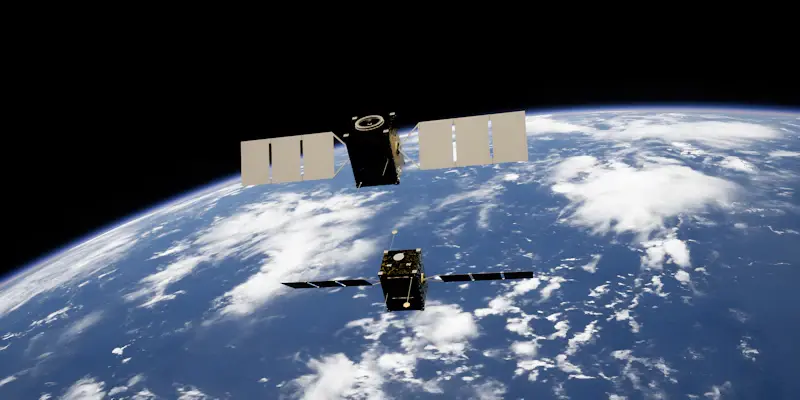Satellite-based heterogeneous networks (HetNets) have often been limited by performance constraints, but recent innovations by the Fraunhofer Institute could significantly change the scene. Fraunhofer’s breakthrough involves redistributing the signal processing load between space-based and ground-based systems. This approach aims to enhance non-terrestrial networks (NTNs), which are critical for achieving widespread and reliable global connectivity. By offloading part of the signal processing to satellites while handling the rest on ground systems, this method promises to maximize the efficiency of satellite communications.
Advancements in Signal Splitting Technology
Space-Based and Ground-Based Signal Processing
The Fraunhofer Institute’s novel signal splitting approach has taken considerable strides forward in signal processing technology. By adopting a method where signal processing responsibilities are shared between satellites and terrestrial systems, the efficiency and performance of non-terrestrial networks (NTNs) are significantly enhanced. This advancement specifically aids in overcoming the traditional limitations faced by satellite communications, making the idea of robust, global connectivity more attainable.
In a demonstrative effort, Fraunhofer leveraged the DVB-S2X satellite TV standard, renowned for its support of channel bonding. This standard enabled the simulation of space-like conditions, notably through the creation of a connection with a geostationary Earth orbit (GEO) satellite positioned approximately 36,000 kilometers above Earth. The elevated position of these GEO satellites compared to low Earth orbit (LEO) satellites adds a complex layer to the signal transmission, demanding advanced solutions like the one offered by Fraunhofer.
Field-Programmable Gate Arrays
Another pivotal aspect of Fraunhofer’s demonstration was the utilization of field-programmable gate arrays (FPGAs) to manage part of the base station processing. This choice is significant as FPGAs offer flexibility and adaptability, making them suitable for a range of applications, including those on satellites. The potential for deploying FPGAs on satellites opens up numerous avenues for processing and managing signals more effectively in space, contributing to the overarching goal of enhanced non-terrestrial networks (NTNs) and better global connectivity.
Objectives and Goals of Project Trantor
Comprehensive 5/6G NTN Coverage
Fraunhofer’s efforts form part of the broader EU-backed project, Trantor, which strives for comprehensive 5/6G NTN coverage. One of the project’s critical objectives is to encourage the adoption of 5G Advanced and pre-6G NTN standards by satellite operators, paving the way for next-generation telecommunications. By fostering such advancements, the project aims to create a robust framework for the integration and deployment of cutting-edge satellite communications technology.
Improving satellite components is another focus area. By innovating the critical hardware and software technologies that underpin satellite communications, Trantor is gearing towards making NTNs more reliable and efficient. The development of advanced user equipment and satellite g-NodeB (gNB) kits plays a crucial role in these efforts, ensuring that users can seamlessly connect to and benefit from enhanced satellite networks.
AI-Assisted Governance Modules
Trantor’s ambitions extend beyond hardware improvements. The project also emphasizes the development of AI-assisted governance modules for quality of service (QoS), traffic, and radio resource management. These modules aim to optimize how satellite networks allocate and manage resources, ensuring consistent and high-quality connectivity for users across the globe. The integration of AI technologies into governance frameworks signifies a substantial step forward in the intelligent management of satellite communications.
Additionally, Trantor seeks to create sophisticated mission planners for satellite networks. These planners will enable more efficient and effective deployment of satellite resources, further improving the overall performance of NTNs. Enhanced cybersecurity resilience is another critical goal, with the project prioritizing the development of robust security measures to protect satellite communications from potential threats and vulnerabilities.
Implications for Global Connectivity
Coherent HetNet Strategies
The significance of coherent heterogeneous network (HetNet) strategies cannot be overstated, particularly in the context of the rapid expansion of space-based communications. Fraunhofer’s innovations and the collaborative efforts embodied in the Trantor project underscore the necessity for well-coordinated approaches to satellite and terrestrial network integration. By addressing the myriad technological challenges involved, these strategies are poised to make comprehensive global connectivity a reality. Moreover, the advancements in signal processing and management facilitated by Fraunhofer and Trantor are reflective of the European Union’s commitment to leading the next era of telecommunications technology. The integration of space-based and ground-based systems represents a forward-thinking approach that aligns with global connectivity goals. This integrative strategy not only enhances the performance of NTNs but also strengthens global communication infrastructures, paving the way for uninterrupted and reliable connectivity worldwide.
Future Outlook for Satellite Communications
Satellite-based heterogeneous networks (HetNets) have historically faced performance limitations. However, recent innovations from the Fraunhofer Institute promise to significantly alter this landscape. The key innovation lies in redistributing the signal processing load between satellites and ground-based systems. This revolutionary approach aims to enhance non-terrestrial networks (NTNs), which are vital for achieving comprehensive and reliable global connectivity. By transferring a portion of the signal processing tasks to satellites while handling the rest on the ground, Fraunhofer’s method seeks to optimize the efficiency of satellite communications. This shift to a more balanced distribution of processing responsibilities could lead to major improvements in the operational capabilities of satellite systems. Furthermore, the greater efficiency achieved through this hybridized processing model supports the broader goals of increasing the coverage and reliability of global communication networks. Ultimately, this breakthrough has the potential to significantly advance the quality and scope of satellite-based HetNets.

